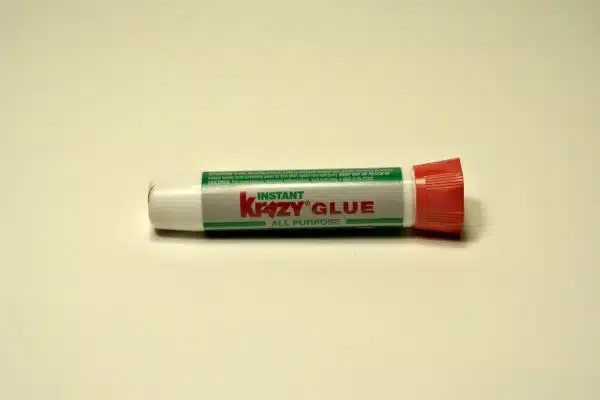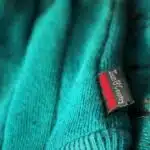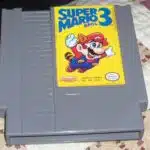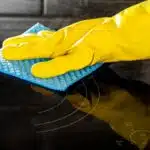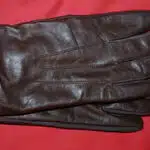Welcome to this article on how to remove super glue from around the home. As a home cleaning and maintenance expert, I understand the frustration that comes with sticky messes left behind by adhesives like super glue. Super glue is a fast-drying adhesive that can be difficult to remove once it has bonded with surfaces such as plastic, metal, or wood. Accidental spills or overuse of super glue can result in unsightly stains on household items, leaving homeowners wondering how to tackle this issue effectively.
Removing super glue requires specific methods and techniques to ensure that no damage is done to the surrounding area. In this article, we will explore various ways you can remove super glue from different surfaces around your home using items commonly found in your household. Whether it’s a small spot on your countertop or a spill on your carpet, we have you covered with practical tips and tricks for safely removing superglue without causing any harm to the surface underneath. So let’s dive into the world of removing stubborn adhesives and make your home look as good as new!
Understanding Super Glue And How It Works
Super glue, also known as cyanoacrylate, is a type of fast-drying adhesive that can bond various surfaces together. It is composed of a chemical mixture that includes cyanoacrylate ester, which is a colorless liquid with a sharp odor. When exposed to moisture, the ester reacts with water vapor in the air and forms long chains of molecules that create a strong bond.
The bonding mechanism of super glue involves a process called anionic polymerization. This means that when the cyanoacrylate ester comes into contact with moisture, it undergoes a chemical reaction that leads to the formation of polymers or long chains of molecules. These polymers then link up with each other and form a solid bond between the two surfaces being joined.
Super glue was first developed in 1942 by Dr. Harry Coover Jr., who was working on creating clear plastic gun sights for World War II soldiers. However, he found that the substance he created was too sticky and difficult to handle until years later when he discovered its potential as an adhesive. Today, super glue is widely used for various applications such as repairing broken items, sealing cracks in walls and floors, and even as a medical adhesive in some cases.
Understanding how super glue works is crucial when it comes to removing it from different surfaces around your home. Before we dive into the various ways to remove super glue from different surfaces, let’s take a closer look at what types of surfaces super glue can bond to.
Types Of Surfaces Super Glue Can Bond To
Super glue is a powerful adhesive that can bond to various surfaces. However, not all surfaces are compatible with super glue, and attempting to use it on the wrong surface can result in permanent damage. Some surfaces to avoid when using super glue include fabrics, painted surfaces, and certain plastics.
Fabrics such as cotton or polyester are porous and can easily absorb super glue, resulting in an unsightly stain. Painted surfaces may also react with the chemicals in super glue and cause discoloration or even corrosion. Certain plastics such as polycarbonate or polypropylene do not bond well with super glue due to their low surface energy.
To prevent accidental bonding of unwanted surfaces, it is important to take some precautions when using super glue. Always read the label and follow the manufacturer’s instructions carefully. Use protective measures like gloves and eye goggles when handling super glue to avoid skin contact or eye irritation.
Before starting any removal process, it is crucial to prioritize safety precautions. By understanding which surfaces are compatible with super glue and taking appropriate preventative measures, you can ensure a successful application while avoiding unnecessary damage or injury.
Safety Precautions Before Starting The Removal Process
- Wearing gloves is essential when attempting to remove super glue from around the home. This will ensure skin contact is minimized and reduce the risk of skin irritation.
- Goggles or other eye protection should be worn to protect the eyes from any potential splatters or fumes that may be generated during the removal process.
- Clothing that covers exposed skin should be worn to further reduce the risk of irritation.
- As solvents and other chemicals may be used in the removal process, prior to beginning it is important to ensure the area is well ventilated.
Wear Gloves
When it comes to removing super glue from around the home, safety should always be a top priority. Wearing gloves is an essential precaution that should never be overlooked. Not only do gloves protect your skin from harsh chemicals, but they also prevent you from accidentally spreading the glue to other surfaces.
The benefits of wearing gloves when removing super glue are numerous. Firstly, gloves provide a physical barrier between your skin and the potentially harmful chemicals found in most adhesive removers. Secondly, they help keep your hands clean and dry, which makes it easier to grip tools and handle other cleaning materials. Finally, wearing gloves can help reduce the risk of irritation or allergic reactions caused by prolonged exposure to certain chemicals.
There are different types of gloves available for removing super glue depending on your needs and preferences. Latex gloves are inexpensive and provide excellent grip and dexterity. However, if you have a latex allergy or need more protection against harsh chemicals, consider using nitrile or vinyl gloves instead. These types of gloves offer superior chemical resistance and durability while still allowing for easy movement of the fingers. By wearing the appropriate type of glove for the job at hand, you can ensure maximum safety and efficiency during the removal process.
Protect Eyes
Before starting the removal process for super glue, it is crucial to take necessary safety precautions to avoid any accidents or injuries. One of the essential safety measures includes protecting your eyes from potential harm caused by chemicals in adhesive removers. Eye protection is an important aspect of chemical safety, especially when working with harsh chemicals.
It is recommended to wear protective eyewear when removing super glue to prevent any splashes or fumes from coming into contact with your eyes. Eyewear like safety goggles or face shields can provide a physical barrier between your eyes and the chemicals used in adhesive removers. It is also essential to ensure that the eyewear fits properly and does not obstruct your vision during the removal process.
Protecting your eyes during the removal process can significantly reduce the risk of eye irritation, burns, or serious injury caused by exposure to harmful chemicals. Remember that prevention is always better than cure, so taking necessary precautions can help you avoid any unwanted harm. In addition to wearing protective eyewear, always read and follow all instructions on the label before using any product and handle with care.
In conclusion, protecting your eyes during the removal process of super glue should never be overlooked. By using appropriate eye protection like safety goggles or face shields, you can ensure maximum chemical safety while performing this task at home. Always prioritize safety before starting any cleaning or maintenance task to avoid accidents and injuries.
Method 1: Using Acetone Or Nail Polish Remover
Using acetone or nail polish remover is one of the most effective ways to remove super glue from surfaces around the home. However, it is important to take precautions when using these solvents as they can damage certain materials such as plastic and some types of fabrics. It is recommended to test a small, inconspicuous area first before applying acetone or nail polish remover to a larger area.
To use acetone or nail polish remover, apply a small amount onto a cotton ball or cloth and gently rub the affected area. The glue should start to dissolve after a few minutes of rubbing. If necessary, repeat this process until all the glue has been removed. Afterward, wash the surface with warm soapy water to remove any remaining residue.
Using alternative solvents such as rubbing alcohol or vinegar can also be effective in removing super glue without causing damage to surfaces. Rubbing alcohol should be applied in the same way as acetone or nail polish remover, while vinegar can be heated up and mixed with baking soda into a paste before being applied onto the affected area. These methods may take longer than using acetone or nail polish remover but are less likely to cause damage to surfaces.
Transition: While using solvents like acetone and nail polish remover is an effective method for removing super glue, it may not always be suitable for certain surfaces. In such cases, using heat can be an alternative solution that loosens up the glue without damaging surfaces. Method 2 will explore this option further.
Method 2: Using Heat To Loosen The Glue
Like a blacksmith using heat to mold metal, you can use heat to loosen the super glue around your home. Using hot water, a hairdryer, or an iron can help break down the bond of the glue and make it easier to remove. However, it is important to take precautions when using heat for super glue removal.
One method is to soak the affected area in hot water for several minutes. This will soften the glue and allow you to gently peel it away from surfaces like ceramic or plastic. Another option is to use a hairdryer on high heat, directing the hot air onto the glue until it begins to soften and loosen its hold. Finally, you can use an iron on low heat with a cloth barrier between the iron and surface with glue residue; this will melt and soften the adhesive.
When using heat for super glue removal, there are some precautions you should take. Always wear protective gloves and keep a safe distance from any electrical devices or flammable materials when using a hairdryer or iron. Additionally, be cautious not to overheat surfaces as this could damage them permanently.
Transitioning into Method 3: Using oil or petroleum jelly can also be effective in removing super glue from surfaces without causing damage.
Method 3: Using Oil Or Petroleum Jelly
To continue with the removal of super glue around the home, let’s move on to another effective method. Method 3 involves using oil or petroleum jelly to loosen the adhesive bond. There are many benefits of using oil as it can also help moisturize and protect surfaces from further damage.
To use this method, simply apply a small amount of oil or petroleum jelly onto the affected area and let it sit for about 10-15 minutes. After that, gently rub the area with a soft cloth until the glue comes off. However, if you don’t have any petroleum jelly at hand, there are alternatives to consider such as baby oil or coconut oil.
The great thing about using oil is that it is safe to use on most surfaces such as wood, metal, plastic, and even fabrics. It is also an affordable and easily accessible solution for removing super glue stains around the house. With this method done correctly, you can remove those pesky super glue stains without damaging your prized possessions. Now that we’ve explored this option thoroughly, let’s move on to our final method; vinegar or lemon juice.
Method 4: Using Vinegar Or Lemon Juice
Vinegar and lemon juice are both acidic substances that can be used to remove super glue from various surfaces around the home. These household items are readily available and can be used as an alternative to commercial solvents.
Using vinegar involves soaking a cloth in white vinegar and placing it on the affected area for several minutes. This helps to loosen the bond between the super glue and the surface. Once the glue has softened, it can be gently scraped off with a plastic scraper or credit card. However, vinegar may not work as effectively on porous materials such as wood or fabric.
On the other hand, lemon juice can also be used to dissolve super glue. The citric acid in lemon juice breaks down the adhesive bond of super glue, making it easier to remove. Simply apply fresh lemon juice onto the affected area and let it sit for a few minutes before wiping it away with a damp cloth. While this method is effective in most cases, it may not work on hardened or thick layers of super glue.
- Vinegar is a cheaper option compared to lemon juice
- Lemon juice has a pleasant scent while vinegar has a pungent odor
- Vinegar may not work well on porous surfaces while lemon juice is effective on most surfaces
- Lemon juice may not work well on thick layers of hardened super glue
When choosing between using vinegar or lemon juice to remove super glue stains around your home, consider factors such as cost, availability, and effectiveness based on the surface you need to clean. Both methods have their pros and cons when it comes to removing stubborn adhesive residue. If neither method works effectively, you can also try using saltwater solution in combination with other cleaning agents for better results.
Method 5: Using Salt And Water
Another effective method to remove super glue from surfaces around your home is by using salt and water. This technique works by creating a chemical reaction that weakens the bond of the adhesive. To start, create a salt solution with warm water. The salt concentration should be one tablespoon for every eight ounces of water.
Once you have prepared the solution, apply it directly to the affected area. Make sure to saturate the glue fully and let it sit for at least an hour or until the glue has softened. Afterward, use a scraper or plastic spatula to remove as much glue as possible. Repeat this process if necessary until all traces of super glue are gone.
Using salt and water is an inexpensive and easy way to remove super glue from different surfaces in your home. It is also safe to use on most materials, including wood, metal, and fabrics. However, be cautious when applying the solution on delicate surfaces such as painted walls or finishes as it may cause discoloration or damage.
As effective as this method is, some stubborn adhesives may require extra steps or specific solvents to remove them entirely. Hence, if this technique did not work for you or you want a more straightforward way to clean up superglue spills in your home, try Method 6: Using Rubbing Alcohol next.
Method 6: Using Rubbing Alcohol
Using rubbing alcohol is a popular method for removing super glue from various surfaces. This solvent breaks down the bond between the glue and the surface, making it easier to remove. However, before applying rubbing alcohol, you need to take some precautions. Firstly, ensure that the area is well-ventilated since rubbing alcohol emits fumes which can be harmful if inhaled in large quantities. Secondly, wear gloves to protect your hands from coming into direct contact with the solvent.
To use rubbing alcohol as a solvent for super glue removal, follow these steps:
- Soak a cotton ball or cloth with rubbing alcohol.
- Place it directly over the glue spot.
- Let it sit for at least 10 minutes until the glue softens.
- Gently rub the area with a clean cloth or sponge until all traces of glue have been removed.
Alternative solvents such as acetone can also be used instead of rubbing alcohol but should be approached with caution as they can dissolve some types of plastic and damage certain surfaces like granite countertops. Always remember to test any new cleaning solution on an inconspicuous area first before applying it widely on your desired surface.
Method 7: Using Baking Soda And Water
The sticky residue left by super glue can be a nightmare to deal with. But don’t worry, there is still hope! Baking soda and water are an excellent combination for removing super glue from various surfaces around your home. The fizzing reaction caused by the mixture helps break down the adhesive properties of the glue, making it easier to remove.
To prepare the baking soda mixture, you’ll need a small bowl, some baking soda, and warm water. Mix 3 parts baking soda with 1 part warm water until it forms a thick paste. Apply the paste to the affected area using a cloth or sponge and let it sit for several minutes. Once the paste has had time to work its magic, use a plastic scraper or your fingers to gently scrape away the softened glue.
If you’re out of baking soda or looking for alternatives, there are other household items you can try instead. White vinegar, nail polish remover, and rubbing alcohol have all been known to help dissolve super glue. However, keep in mind that these substances can be harsh on certain surfaces and may cause damage if not used carefully. Always spot test first before applying any solutions to larger areas.
Moving onto method 8: using a commercial super glue remover can also be effective in removing stubborn stains left by superglue. These products are specially formulated to break down tough adhesives without damaging your surfaces. When using these removers, always read and follow the instructions carefully. And remember that prevention is key – try using gloves when working with super glue in the future to avoid any more sticky situations!
Method 8: Using A Commercial Super Glue Remover
Commercial Super Glue Removers are usually a combination of solvents and lubricants. It is important to read the instructions on the label before applying the product. The product should be applied directly to the affected area, allowed to sit for a few minutes and then wiped with a damp cloth. It is important to handle the product with caution as it can be irritating to the skin and eyes. Proper ventilation should be provided while using the product. Results vary, depending on the surface and amount of glue residue, but it is generally effective at removing super glue.
Ingredients
One of the easiest ways to remove super glue from around the home is by using a commercial super glue remover. These products are widely available in hardware stores and online shops, and they can effectively dissolve the adhesive without damaging the surface underneath. However, it is important to choose a product that is safe for household uses and has appropriate chemical properties.
When selecting a commercial super glue remover, look for one that contains acetone or cyanoacrylate solvent. Acetone is a common ingredient in nail polish removers and can be used to dissolve many types of adhesives, including super glue. Cyanoacrylate solvent, on the other hand, is specifically formulated to break down super glue bonds. It is important to follow the manufacturer’s instructions carefully when using these products, as they can be hazardous if not used properly.
In addition to using a commercial super glue remover, there are several other household items that can help dissolve and remove super glue. For example, rubbing alcohol or vinegar can be applied directly to the affected area with a cloth or cotton swab. These liquids have mild acidic properties that can break down the adhesive bond over time. When using household items for this purpose, it is important to test them on an inconspicuous area first to ensure that they do not damage the surface underneath.
Application
Moving on to the application aspect of removing super glue, it is essential to follow the correct steps to ensure that the product works effectively. One of the common mistakes that people make is not applying enough of the remover onto the affected area. It is vital to remember that using too little remover may not break down all of the adhesive, causing it to remain stuck on the surface. In contrast, using too much can cause damage or discoloration to delicate surfaces such as plastics.
Best practices for applying a commercial super glue remover include ensuring that you are working in a well-ventilated area and wearing gloves and protective eyewear. Begin by applying a small amount of the product onto a clean cloth or cotton swab and gently rubbing it onto the glue until it starts to dissolve. It is important to note that some products may take longer than others to work, so be patient and allow sufficient time for the adhesive bond to break down fully.
After applying the remover, wipe away any excess solution with a clean cloth and repeat if necessary until all traces of glue are removed. Finally, wash or rinse off any remaining residue with soap and water or according to manufacturer’s instructions. By following these best practices, you can safely and effectively remove super glue from various surfaces around your home without causing any damage or harm.
Results
Transitioning to the subtopic of ‘Results’ for the method of using a commercial super glue remover, it is important to note that the effectiveness of such products may vary depending on the type and strength of the adhesive being removed. However, when used correctly, these removers can effectively break down and dissolve super glue from various surfaces, including delicate ones.
It is worth noting that while commercial super glue removers may be effective, they often contain harsh chemicals that can be damaging to delicate surfaces such as plastics or fabrics. For those looking for eco-friendly alternatives, there are natural options available that can break down super glue without causing harm to the environment or surrounding surfaces. These include using vinegar or lemon juice to dissolve the adhesive or rubbing alcohol to weaken its bond.
In conclusion, while commercial super glue removers can provide effective results in removing stubborn adhesive residue, it is important to use them with caution and follow best practices to avoid damaging delicate surfaces. For those seeking eco-friendly alternatives, natural solutions such as vinegar or rubbing alcohol can also be effective in breaking down super glue without harming the environment or surrounding areas.
Tips For Removing Super Glue From Clothing Or Skin
Removing super glue from clothing or skin can be a daunting task, but with the right tools and techniques, it can be done effectively. One of the most important things to remember is to act quickly. The longer you wait to remove the super glue, the harder it will be to get rid of it.
One effective way to remove super glue from clothing is by using acetone or nail polish remover. Simply apply a small amount onto a cotton ball or cloth and dab gently onto the affected area until the glue starts to dissolve. For skin, using warm soapy water and gently rubbing with a cloth or sponge can also help remove the glue.
Another useful tip for removing super glue stains is by using white vinegar. Soak a cloth in vinegar and place it on top of the stain for about 15-20 minutes before washing as usual. This method works well on fabrics that cannot be treated with acetone.
Super glue alternatives such as double-sided tape or adhesive strips can also help prevent future accidents with super glue. These alternatives provide a strong hold without the risk of staining clothes or skin. Additionally, wearing gloves while handling super glue can also prevent accidental spills and stains.
Preventing future accidents with super glue involves being cautious and taking necessary precautions. Always read instructions carefully before using any adhesive products, use in well-ventilated areas, and avoid contact with skin and eyes. By following these tips, you can ensure that your home remains free of unwanted super glue stains.
Preventing Future Accidents With Super Glue
After successfully removing super glue from clothing or skin, the next step is to ensure that such accidents do not happen again. Prevention is always better than cure, and this applies even to household accidents involving super glue. To prevent future accidents, it is important to take safety measures and precautions when handling super glue.
One effective way of preventing accidents with super glue is by keeping it out of reach of children and pets. Super glue bottles should be kept in a high place or locked cabinet where they cannot be accessed easily. It is also advisable to store them in their original packaging and away from food items or other chemicals that could react with the glue.
Another safety measure that can be implemented is wearing gloves when using super glue. This will protect your skin from coming into direct contact with the adhesive in case an accident occurs. It is also important to work in a well-ventilated area as inhaling super glue fumes can cause respiratory problems. By taking these simple precautions, you can prevent accidents and protect yourself from potential harm.
When it comes to handling super glue, prevention is key. By following safety measures and taking necessary precautions, you reduce the risk of accidents occurring around your home. However, if an accident does occur and you are unable to remove the super glue yourself, it may be time to call in professional help.
When To Call In Professional Help
While DIY options are often preferred by those looking to save money, there are times when it is best to hire a professional. Removing super glue from various surfaces can be tricky and time-consuming. In some cases, it may even damage the surface if not done properly. Hiring professionals for this task ensures that the job is done correctly without causing any further harm.
Professional cleaning services have specialized equipment and knowledge of how to remove super glue from different surfaces. They also know which cleaning agents to use that won’t damage the surface underneath. While hiring professionals may cost more than DIY alternatives, it is worth it in terms of time, effort, and overall effectiveness.
On the other hand, if you still prefer a DIY approach, there are alternative methods for removing super glue that don’t require professional help. These include using acetone or nail polish remover, rubbing alcohol or vinegar solutions, or even just hot soapy water depending on the surface type. However, keep in mind that these methods may not be as effective as professional cleaning services and could still cause damage if not used correctly.
In conclusion, while removing super glue from around your home can be a challenging task that requires expertise, hiring professionals is always the best option for ensuring a safe and effective removal process. However, if you choose to try DIY alternatives instead of seeking professional help, make sure to use caution and follow instructions carefully to avoid any potential damage to your home’s surfaces. Enjoy your super glue-free home!
Conclusion: Enjoy Your Super Glue-Free Home!
After employing the various DIY removal techniques, it is essential to thoroughly clean the affected area. This can be done by using a cloth soaked in warm soapy water. However, before cleaning the area, ensure that all traces of glue have been successfully removed. Otherwise, the cleaning process may spread the adhesive further around your home.
In some situations where DIY methods fail, hiring professional cleaners might be necessary. Professional cleaners are equipped with advanced tools and chemicals that can remove super glue from surfaces without damaging them. Additionally, they possess extensive knowledge on how to handle different types of surfaces and materials safely.
In conclusion, removing super glue from around your home can be tedious but not impossible. With DIY removal techniques and hiring professional cleaners being viable options, there is no need to let super glue ruin your home’s appearance. So go ahead and enjoy your super glue-free home!
Conclusion
Super glue is a powerful adhesive that can create a tight bond between surfaces. However, accidents can happen, and it’s not uncommon for super glue to end up in places where it shouldn’t be. Fortunately, there are ways to remove super glue from around the home. Before starting the removal process, it’s important to understand how super glue works and the types of surfaces it can bond to.
When attempting to remove super glue, safety should always be a top priority. It’s essential to wear protective gloves and work in a well-ventilated area. Two common methods for removing super glue include using acetone or nail polish remover and using heat to loosen the glue. If you’re dealing with super glue on clothing or skin, special care needs to be taken.
Preventing future accidents with super glue is crucially important. Always store super glue in a safe place away from children and pets. When working with this type of adhesive, read the instructions carefully and use only as directed.
In conclusion, removing super glue from around the home can be done safely and effectively using the right methods. By taking precautions before starting the removal process and following our tips for preventing future accidents with super glue, you can enjoy your home without worrying about unwanted adhesive mishaps. Remember: an ounce of prevention is worth a pound of cure!
Image Credits
- “Super Glue” by HomeSpot HQ (featured)

